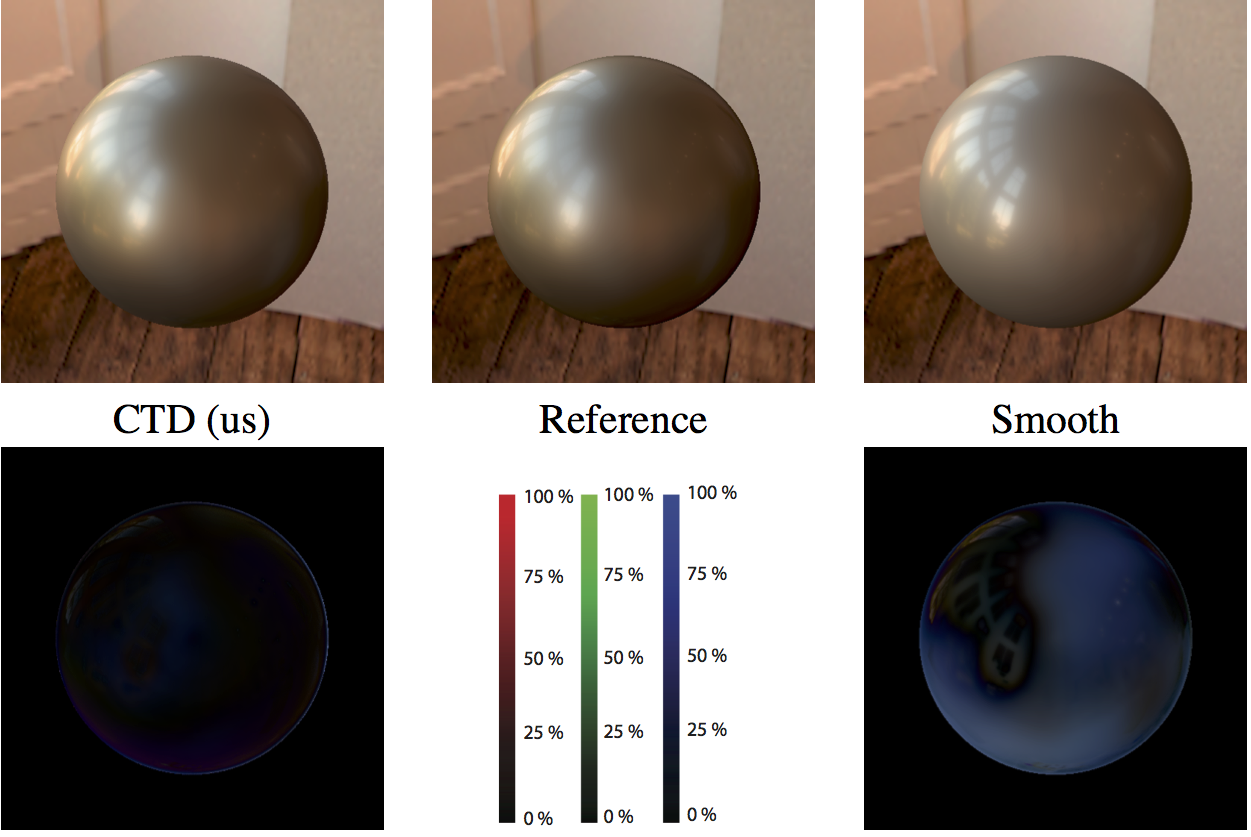Section: New Results
Diffraction effects in reflectance properties
Participant : Nicolas Holzschuch [contact] .
|
Reflectance properties express how objects in a virtual scene interact with light. They control the appearance of the object: whether it looks shiny or not, it has a metallic or plastic appearance. The reflectance model (BRDF) is essential for photorealistic pictures. Measured reflectance provide high realism, at the expense of memory cost. Parametric models are compact, but it is difficult to find the right parameters from measured reflectance.
Many parametric models are based on a physical representation of the surface micro-geometry and how it interacts with incoming light. The Cook-Torrance model assumes that light follows the principles of optical geometry: it is reflected by the surface micro-geometry but also potentially occluded. The diffraction model assumes that the micro-geometry diffracts the incoming light. This reflectance model has an intrinsic wavelength dependency. Previous experiments have shown that fitting measured materials to parametric models is hard. Heuristic models based on either Cook-Torrance or diffraction are complex, with many parameters. Our research has shown that both effects (optical geometry and diffraction) are present in most measured materials [6] . Based on this knowledge, we have proposed a new reflectance model, that accurately represents measured reflectance [10] . This model combines optical geometry for the specular peak and diffraction effects for wide-angle scattering.



